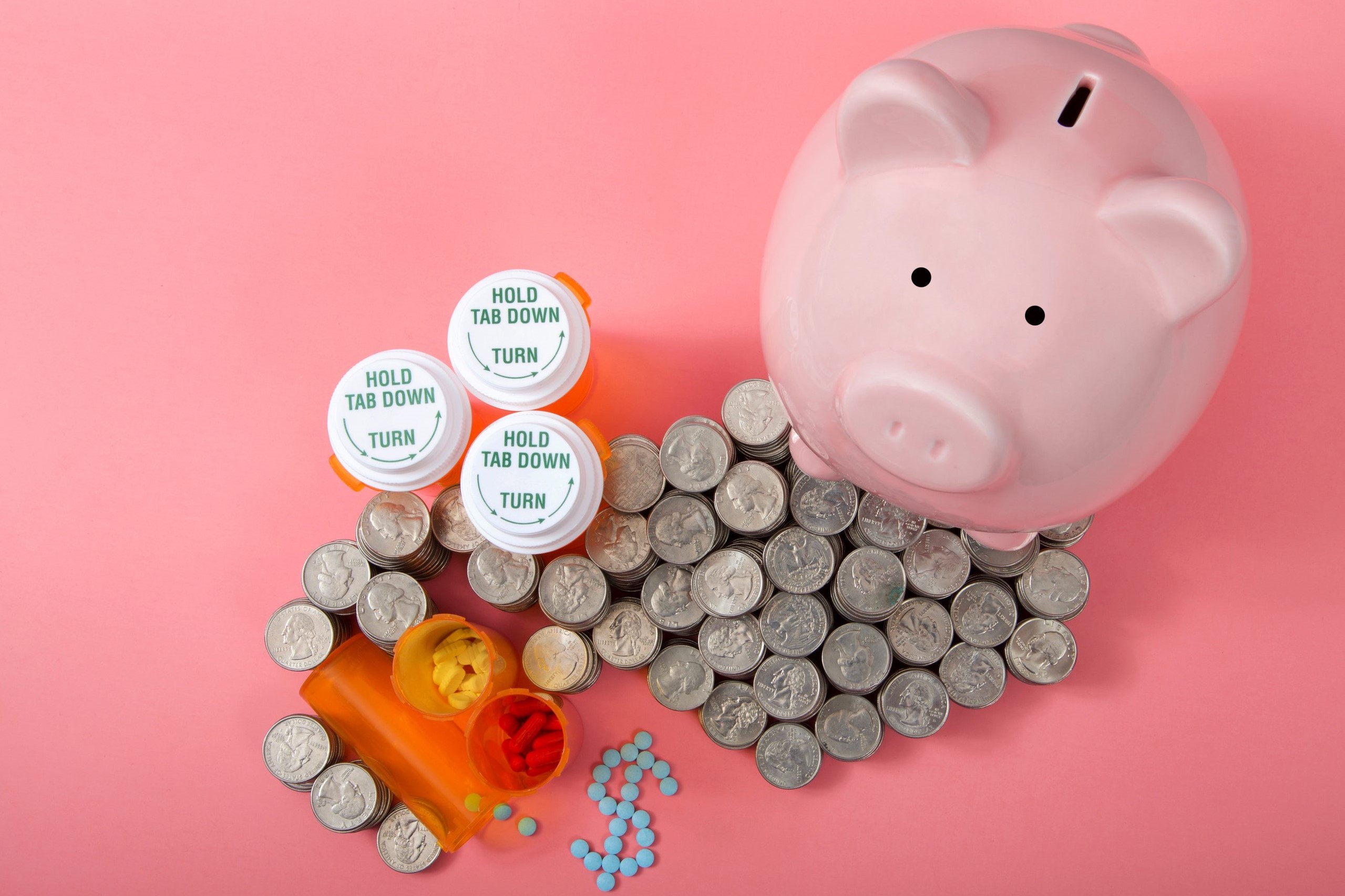Introduction
If you are retiring soon, the rising cost of prescription drugs may be one of your major concerns. However, there is good news. If you opt to enroll in a Medicare Part D plan, you don’t have to pay the entire cost of your prescription drugs. A private insurer will shoulder a portion of your drug expenses.
This article will give you some tips on how to choose a Medicare Part D plan. We will also explain how much will Medicare Part D cost you.
What is a Medicare Part D plan?
Most people over the age of 65 have Medicare Part A (hospital insurance) and Part B (medical insurance). However, neither parts cover prescription drugs.
To get drug coverage, you need to purchase a prescription drug plan from private insurers. You can do this by either supplementing your Original Medicare with a standalone Part D Prescription Drug Plan (PDP) or enrolling in a Medicare Advantage plan, also called Medicare Part C, which includes prescription drug coverage.
Although it is optional to get a Medicare Part D plan, it is advantageous to get one, especially if you are suffering from chronic conditions that require heavy drug usage. Having a Medicare Part D plan will be a big help in reducing your medical expenses.
Your next question might be – how much will Medicare part D cost?
What do Medicare Part D plans cost?
The cost of Medicare Part D depends on factors like your income, enrollment date, the type of prescription drugs (brand-name or generic), and the pharmacy (in-network or preferred). These variables are used in computing your monthly premiums. Besides premiums, your Medicare Part D cost also includes out-of-pocket expenses like deductibles, coinsurance, and copayments.
The Medicare part D premium 2022 depends on the plan you choose. As of now, the monthly premium costs range from $7 to $99. But remember that you may need to pay extra if you fall under the higher-income category. This income-related monthly adjustment amount (Part D IRMAA) goes to Medicare.
Another item that may potentially add to your Medicare Part D cost is the late enrollment fee. If you are eligible for Part D yet decide to enroll later, this fee is added to your premium. The amount is computed as a percentage of your base premium ($33.37 in 2022), as well as the number of months you were eligible for Part D but did not enroll. You may be able to avoid penalties for delayed enrollment if you have “creditable coverage” (coverage that is as good as Medicare) through an employer plan if you are working past 65.
Next, let’s find out the different phases of your Medicare Part D cost:
- Annual Deductible phase
Before a Part D plan contributes to your prescription drug expenses, you need to spend a specified amount called a deductible. The Medicare part d deductible 2022 is capped at $480.
After meeting this basic requirement, you move on to the Initial Coverage phase.
- Initial Coverage phase
This phase is when your Part D plan starts paying for a portion of your prescription drugs.
On your side, you are expected to pay a fixed amount for prescriptions (copayments) and a percentage of the drug’s cost (coinsurance). Every Part D plan has a list of covered drugs, which is known as a formulary. Drugs are classified according to tiers – from inexpensive Tier-1 (generic) to Tier-4 (non-preferred, brand-name). Drugs belonging to higher tiers may require higher copayments and coinsurance.
Once the total Medicare Part D cost (paid by you and your Part D plan) reaches the initial coverage limit of $4,430 (in 2022), you enter the next phase – Part D Coverage Gap (historically known as the “Donut Hole”).
- Medicare Part D Coverage Gap (or “Donut Hole”)
If you have exceeded the initial coverage limit, you are now in the Part D Coverage Gap or “Donut Hole“. You are expected to pay 25% for brand-name and generic medicines.
For brand-name prescription drugs, manufacturers and your Part D plan contribute 70% (known as the ‘manufacturer discount’) and 5% respectively to the cost. For generic drugs, your Part D plan pays the remaining 75% of costs.
However, once your “true” out-of-pocket costs (Part D TrOOP) reach $7,050 (in 2022), you exit the Donut Hole and enter the next phase. Your TrOOP includes whatever you paid for covered drugs, including deductible, copayments, coinsurance, and discounts paid by drug manufacturers while you were in the donut hole. The TrOOP does not include your premiums or anything paid by your Part D plan.
- Part D Catastrophic Coverage
Those with escalating Medicare part d cost reach this phase. For the remaining months, they contribute a 5% coinsurance or $3.95 (for generic drugs) and $9.85 (for brand-name drugs), whichever is higher.
There is a Low-Income Subsidy (LIS) called “Extra Help,” wherein the cost of prescription drugs is capped at $3.95 and $9.85 for generic and brand-name drugs, respectively. To qualify for Extra Help, your resources must be limited to $15,510 for an individual or $30,950 for a married couple living together. To learn more about its qualifying requirements, read this booklet.
How do you buy a Medicare Part D plan?
Since you are now aware of Medicare Part D costs, you are ready to look for a Part D plan that is right for you.
There are two ways. One option is to add a standalone Part D Prescription Drug Plan (PDP) to your Medicare Parts A and B hospital and medical coverage you get from Original Medicare.
Your second option is to enroll in a Medicare Advantage (Medicare Part C) plan that includes prescription drug coverage (also known as an “MA-PD” plan).
Whichever option you eventually choose, start by listing down your current medications. Then, check the plan’s formulary (list of covered medications) and drug tier levels. Make sure that your drugs are on the plan’s list and fall within an affordable tier. Your copayments will depend on the drug’s tier level.
Next, look at enrollment periods. If you are nearing 65, now is the time to check for your initial enrollment period (IEP). Typically, this 7-month period starts three months before the month of your 65th birthday and coincides with when you are eligible for Original Medicare.
Otherwise, you can also enroll or switch Part D plans every Annual Election Period (AEP), which runs between October 15 and December 7 of each year. You may be allowed to enroll in a plan if you have special circumstances such as losing employer coverage or change residences – this period is called the Special Enrollment Period (SEP).
Once you have decided on a plan, the last step is to enroll online by providing your Medicare number and eligibility date.
What are some guidelines in finding the right Medicare Part D plan?
Here are some helpful tips in finding a suitable Medicare Part D plan:
- Have regular medical checkups to get an early assessment of medications.
- The availability of certain part D plans depends on where you live. Get your best options by shopping with a platform like Ascend.
- Compute your overall expenses. Some lower-premium Part D plans may lack coverage, resulting in your paying more out-of-pocket expenses. Therefore, find out early what they don’t cover.
- Check for the plan’s performance by getting their CMS star ratings.
- If you are enrolling in a Medicare Advantage plan that includes prescription drug coverage, check if your preferred doctors and pharmacies are listed in the plan’s network.
Final Words on Medicare Part D Costs
When you decide to get a Medicare Part D plan, it is advisable to balance your future medical needs with the Medicare Part D cost. If you are not satisfied with your current plan, remember that you can shift to another Part D plan on the next available enrollment period.
At CoverRight, we’re here to help you find the right coverage that you deserve. Reach out today and start finding the best Medicare plan for you.







